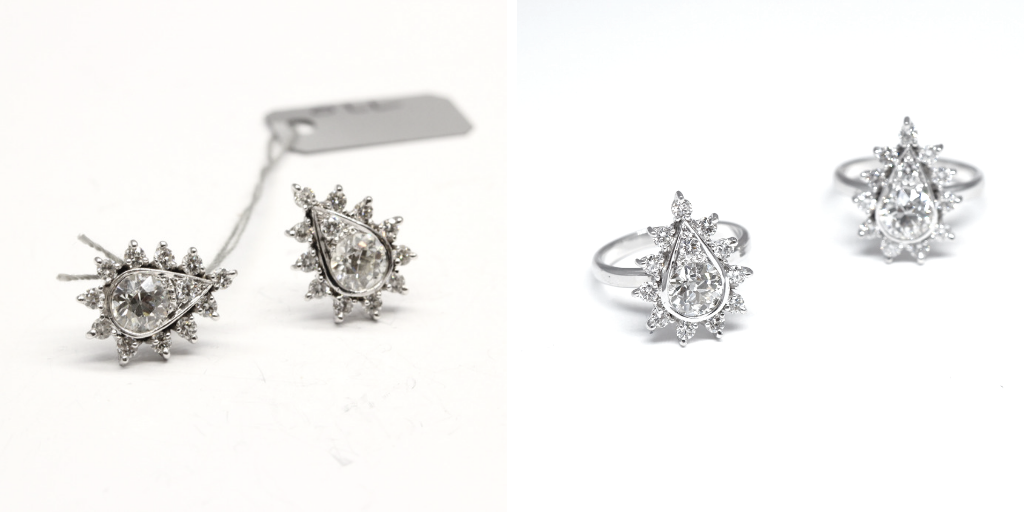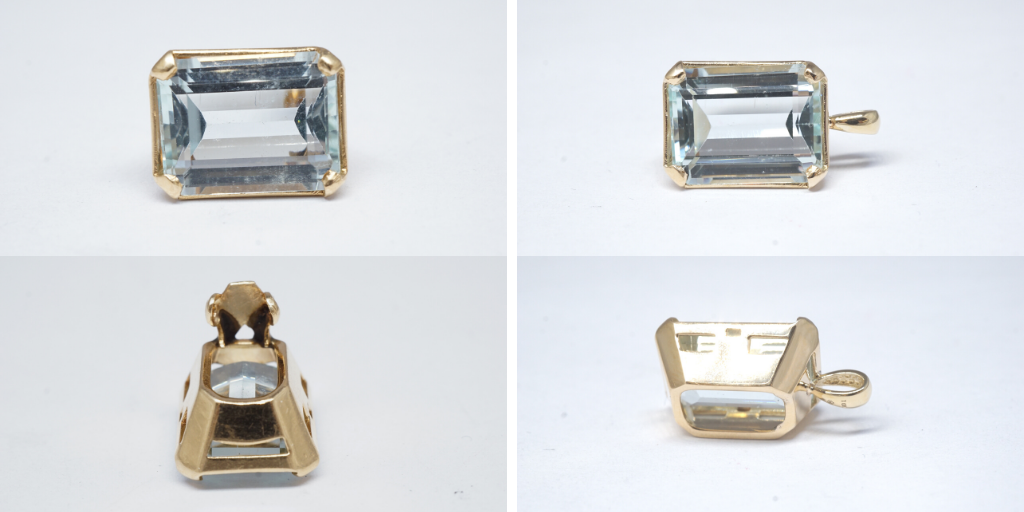When to Redesign Jewelry Instead of Repairing It: 8 Things to Consider
Written by Anna Currell
January 12, 2024

Jewelry isn’t just an accessory. It can hold sentimental value and often has a story or memory attached to it. When a cherished piece gets damaged or worn down over time, your first instinct may be to have it repaired to restore it to its original state. However, in some cases, redesigning or repurposing the jewelry can breathe new life into it and make it even more meaningful than it was before. Here’s how to decide whether you should repair or redesign jewelry that’s in need of some attention:
#1: Assess the Damage
Have a professional jeweler assess the type and extent of damage present. Things like loose or broken prongs, worn ring shanks, or damaged gemstones can usually be repaired fairly easily and cost-effectively. However, if the metal in your piece is cracked or misshapen, if gems have fallen out leaving empty settings, or if there is extensive wear and tear, a redesign may be a better option. The cost and effort to repair significant damage could end up exceeding the intrinsic value of the original piece.

A class ring with a completely broken stone.
#2: Consider the Jewelry's Age and Style
It's important to take the era and style of the jewelry into account. Vintage or antique pieces may be excellent candidates for redesign because their styles may feel outdated. For example, an art deco ring from the 1920s could be restyled into something more modern. Rings from the 1980s and 90s often have small center stones with intricate engraved bands, which could be modified into simpler, sleeker styles. Additionally, jewelry that you purchased a long time ago might not match your current taste anymore — trends change, and so does your sense of style! Redesigning your jewelry can help you retain the sentimental value of the materials while creating a piece you love.
#3: Account for Lifestyle & Physical Changes
For jewelry that holds special memories, like an engagement ring, you may want to keep it as is and resist any changes. However, lifestyle changes may make your original jewelry design impractical. For instance, a high-prong solitaire diamond may start to feel uncomfortable and get in the way once you become a parent to young kids — redesigning the ring into a bezel setting can help you to wear it comfortably again. Or maybe a ring no longer fits because of weight changes, injuries, or arthritis in your knuckles; you can take the opportunity to resize the ring and redesign it to create more surface area and include more gemstones!
#4: Incorporate Other Treasured Jewelry
For unmatched earrings, single cufflinks, or necklaces with a broken clasp, reinvent them as completely new pieces. Take a few mismatched earrings and combine their components to turn them into one completely new, fabulous pair. You could incorporate cufflinks into a pendant, or turn a collection of faded chains into one updated necklace. You can reset single loose gems from something in your grandmother’s jewelry box into new modern pieces that are tailored to your taste. Repurposing jewelry with stones or metals from special pieces is a great way to create a modern heirloom.

#5: Add Personalization
Redesigning special jewelry into a fresh, modern style also gives you the opportunity to add custom details that personalize the piece to your story. Add an engraving with a special date or message, replace a cloudy gem with your personal birthstone, or incorporate metals from a loved one’s jewelry to increase not just montary but also sentimental value.
#6: Consider Cost
Get quotes from a few jewelry experts to compare the costs of your repair and redesign options. If a piece requires extensive repairs nearing or exceeding the cost of redesigning from scratch, the latter may be a better investment. Also factor in whether you'll still love and wear the jewelry after repairing it — if not, redesign is a way to get more value for your money. On the other hand, if the repairs are simple and inexpensive, they’ll allow you to preserve the original and get back to wearing your jewelry quickly. Ultimately the choice between repairing and redesigning will depend on the specifics of your situation.
#7: Find the Right Jeweler
Not every jeweler has the expertise to redesign jewelry, so finding a professional with specialized design skills and a great portfolio is key. They can walk you through your options, help refine your vision, and guide you toward reimagining your piece. Be sure the jeweler you work with understands the sentimental value of your piece and find out if they are willing to recycle existing metals or gems. Prioritize custom jewelry experts and teams of artisans over larger mass-market factories for a personalized approach and one-on-one attention.
#8: Make It Meaningful
Lastly, take the jewelry’s emotional value and meaning into account. Will the original sentiment and memory still remain after a jeweler repairs any damage? Does the thought of altering your jewelry feel too risky or painful? If so, repair is the way to faithfully restore your jewelry. But if reimagining the piece feels like an opportunity to breathe new life and meaning into your jewelry, redesigning can create an even more special treasure and honor its origins. Let your heart guide you to the best option.
Either way, caring for your cherished jewelry and passing it down honors its place in your story. Whether you choose to repair or redesign your jewelry, be thoughtful throughout the process. Take the time to find the right jeweler who will treat your pieces with the care they deserve. With patience, creativity, and care, your jewelry can last and can be passed down for generations to come. What matters most is not preserving its original state, but preserving the story, meaning, and memories it represents. Ready to redesign your jewelry? Our expert team of bespoke jewelers can help you invent a new take on an old masterpiece.


